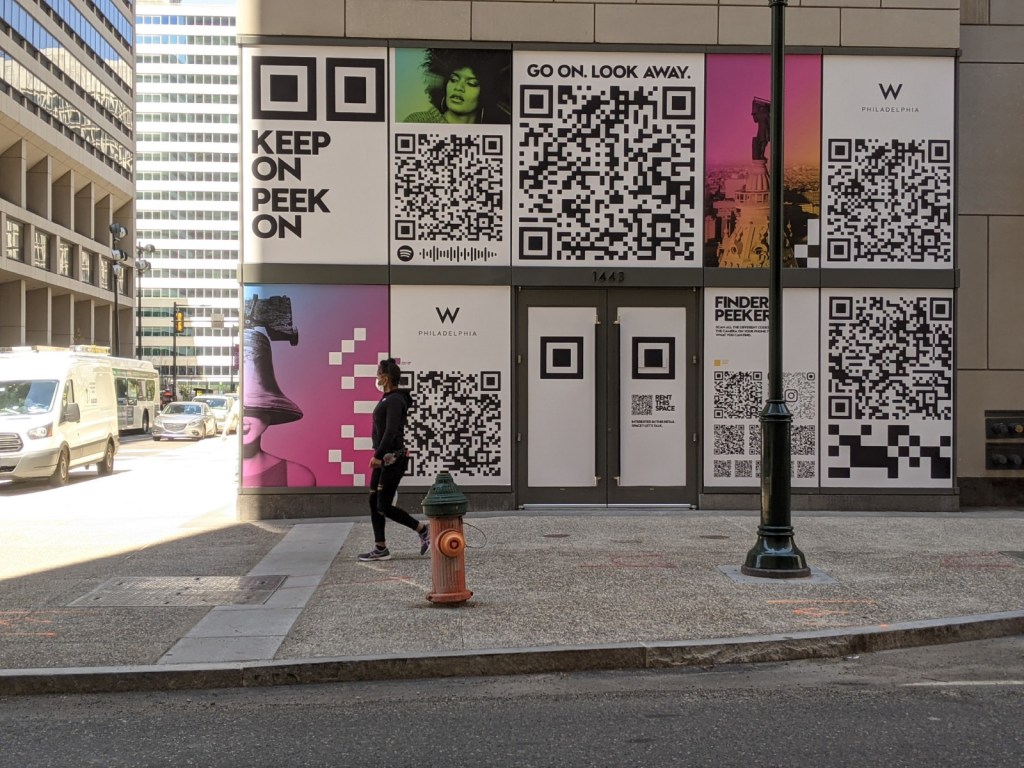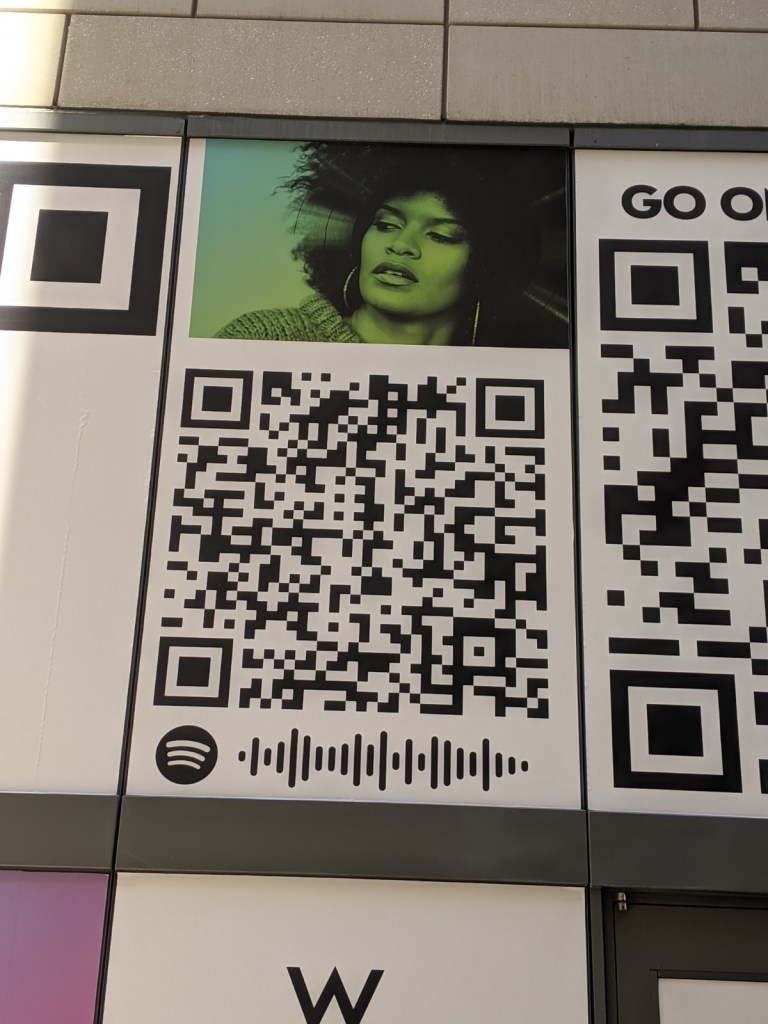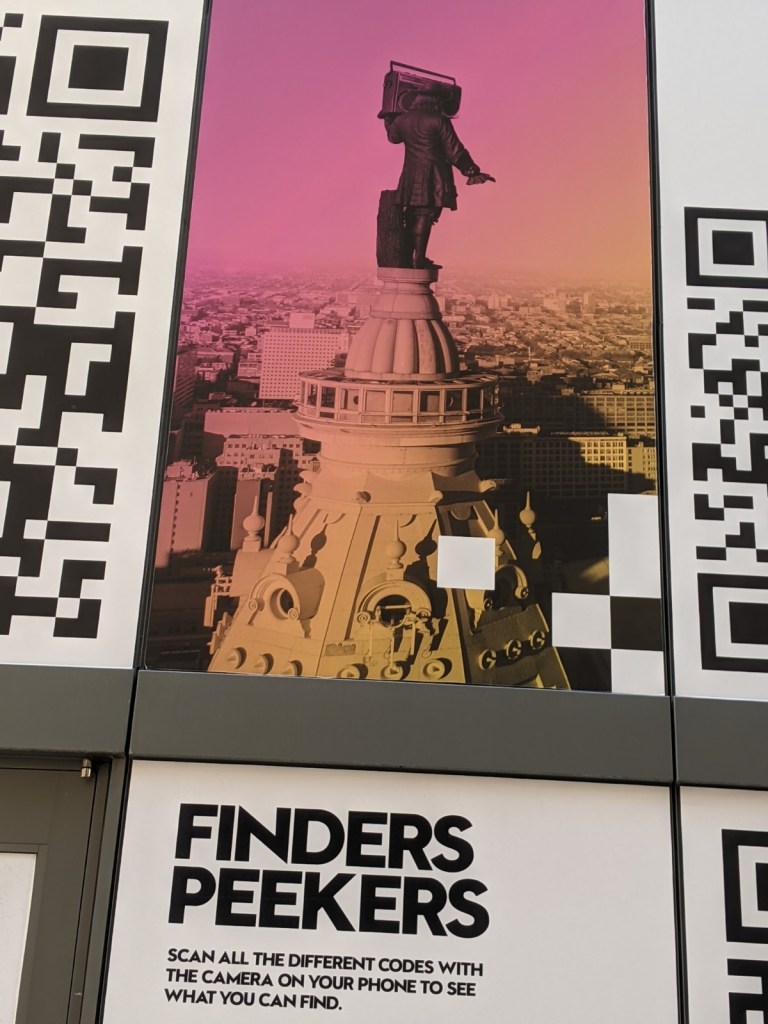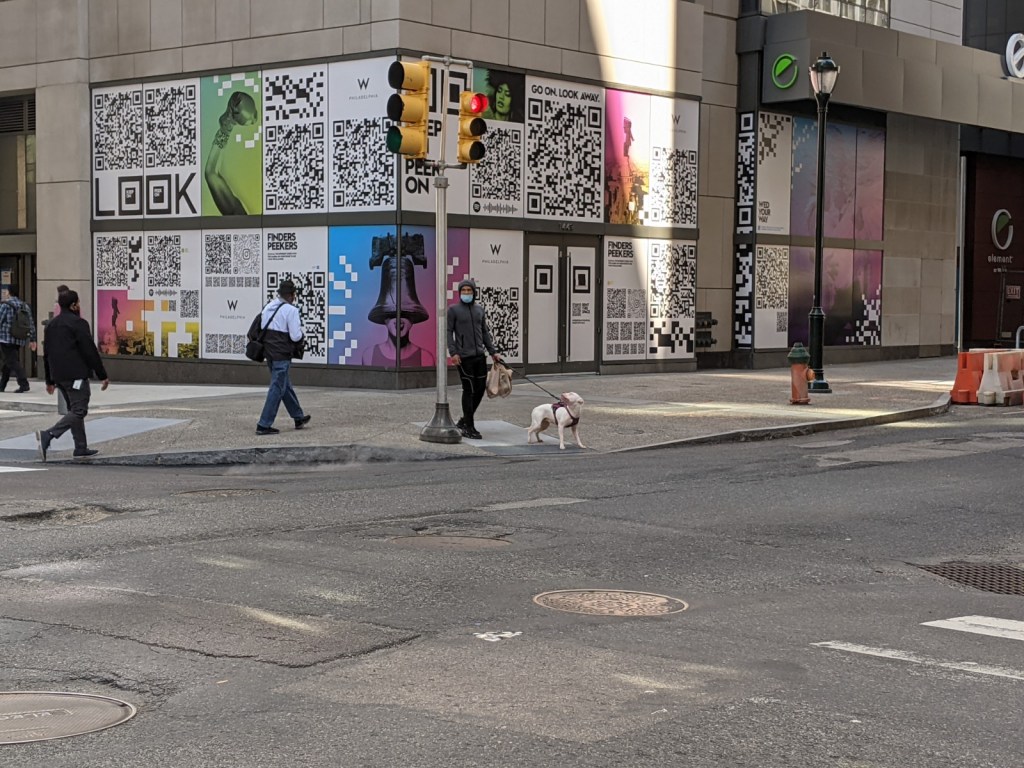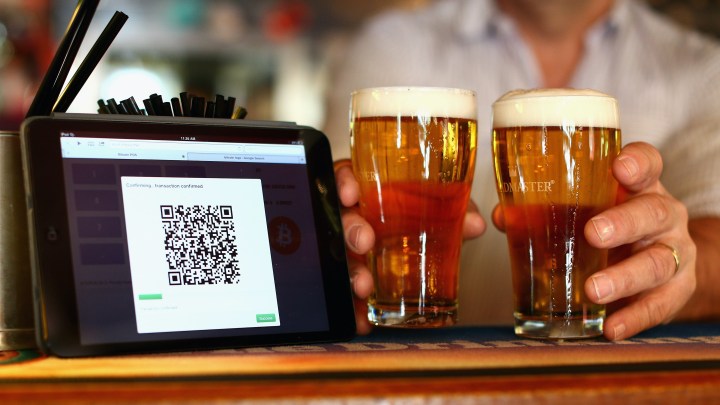
Hotels try to follow restaurants’ lead and hook consumers on QR codes
Hotels try to follow restaurants’ lead and hook consumers on QR codes

Been to a restaurant lately? To pull up the menu, you may have had to aim your phone at a geeky-looking black-and-white image, usually made up of squares. It’s a QR — or quick response — code.

But you likely already knew that QR codes have gone mainstream during the pandemic as a way to share information from a social distance.
Now other businesses are trying to cash in on the QR rush, betting that the technology and our comfort with it will last after COVID-19. That includes hotels.
At the corner of 15th and Chestnut streets in Center City, Philadelphia, a fancy hotel is going up.
But at the construction site, instead of a fancy architect sketch of what’s coming, a series of life-size QR codes — 6 feet by 6 feet — are printed on the wall.
Scan them with your phone, and you learn that a new branch of the hipster W Hotel chain is coming to this block.
The QR scheme is the brainchild of Rob Reed at the ad agency One Trick Pony. He said the idea came to him while he was — no kidding — scanning a restaurant QR code.
![]()
Life-size QR codes at the W Hotel, Philadelphia. ![]()
The Spotify playlist QR code at the W Hotel site . ![]()
![]()
Life-size QR codes seek to spread the word about the W Hotel coming to this block in Philadelphia.
“I scanned it with my phone. I didn’t realize that the camera automatically kicked to their webpage, and I saw the menu,” Reed said. “And I was like, ‘Man, this is like genius.’ Like, we used to make fun of them before.”
Of the dozens of QR codes on the wall here, one has the Spotify logo embedded.
“If you scan that one, it goes right to their playlist,” Reed said.
The hotel team invited local Philly DJ Joshua Lang to curate the playlist, which includes tracks from Róisín Murphy and Leon Bridges. The tunes are meant to tease a local, trendy vibe.
“We wanted to infuse some of the culturally relevant brand aspect of what W is known for,” said Steve Snyder, senior account director at One Trick Pony. “And specifically tied to a local cultural connection.”
Then, if you scan the QR code showing the Instagram logo, an Instagram video pops up on your phone screen, revealing a team of personal trainers from local outfit Triyo Fitness. They plan to run fitness classes on site when the W opens.
But the QR code is used for more than just marketing, Edward Baten, general manager at W Philadelphia, said.
“We have been using the QR codes for everything from check-in experiences to communicate within our guest rooms, our in-room dining menus or services that might be available,” Baten said. “Even using QR codes to allow guests to use their personal iPhone device as a remote control for the TV.”
By one estimate, the hotel industry’s adoption of QR codes grew seven-fold in the pandemic.
“I don’t think anyone ever looked at a QR code and thought, ‘Oh, this is supercool.'”
Jasper Radeke, mobile marketing professional
These codes date back to the 1990s; an employee of the Japanese auto parts maker Denso Wave invented the QR code in 1994 to track inventory. Still, until recently, many observers declared QR codes dead, at least for American consumer use.
“QR codes for a while were seen as somewhat uncool,” said Jasper Radeke, marketing director of the mobile marketing firm AppsFlyer. “I don’t think anyone ever looked at a QR code and thought ‘Oh, this is supercool.’”
Let’s face it, these codes tend to be black and white and are literally square. A few years ago, users needed to download special phone apps to read QR codes.
But now iPhone and Android cameras come with built-in QR readers. And it’s cheap and easy to make these codes, which took off in restaurants during the pandemic.
“All of a sudden, there was also a function that was not just a gimmick,” Radeke said. “That’s what the pandemic added to this — the move towards contactless. And also the questions around, ‘How do I get information to the people in the restaurant?'”
Today, national pharmacy chains and Walmart offer QR codes at the checkout. Doctors’ offices embed them in emails to get patient information. It pretty much took 25 years for this technology to go big.
And that’s not uncommon in innovation history, said Petra Moser, an economist and historian at New York University. She noted that the process for making modern rubber came around in the 1840s.
“When Charles Goodyear invented vulcanization, people just really didn’t know what to do with it,” Moser said. “All the things we use rubber for today, they were not invented yet.”
Take the automobile. The Model T came around seven decades later.
The medical breakthrough of penicillin came about in 1928, though widespread use followed decades later.
“To make it actually really usable, you needed to manufacture it,” Moser said, “and science wasn’t up to that task yet till 20 years later.”
Will the QR code experience its own long run? Perhaps, if users find the information the codes deliver useful. Here’s one possibility, offered by consumer psychologist Helen Chun at The Hotel School at Cornell University.
“You are dining a hotel restaurant. There is this nice wine that you are enjoying, and there is this QR code on the bottle,” Chun said. “And you scan it, and you can book directly to visit this winery.”
Or, Chun said, a hotel can tailor a QR code to a specific customer’s needs, for instance, how to order hypoallergenic pillows or find a nearby vegetarian restaurant.
“You collect information on each customer, and then you can customize the offering and provide different QR codes,” Chun said.
The key is making QR code information relevant.
But are the QR codes relevant at the corner of 15th and Chestnut in Philadelphia? I waited an hour at the site and didn’t see a single passerby scanning.
It might have been the wrong hour. Still, any new digital thing can’t just be a gimmick, Chun said. It has to deliver something valuable.
There’s a lot happening in the world. Through it all, Marketplace is here for you.
You rely on Marketplace to break down the world’s events and tell you how it affects you in a fact-based, approachable way. We rely on your financial support to keep making that possible.
Your donation today powers the independent journalism that you rely on. For just $5/month, you can help sustain Marketplace so we can keep reporting on the things that matter to you.


